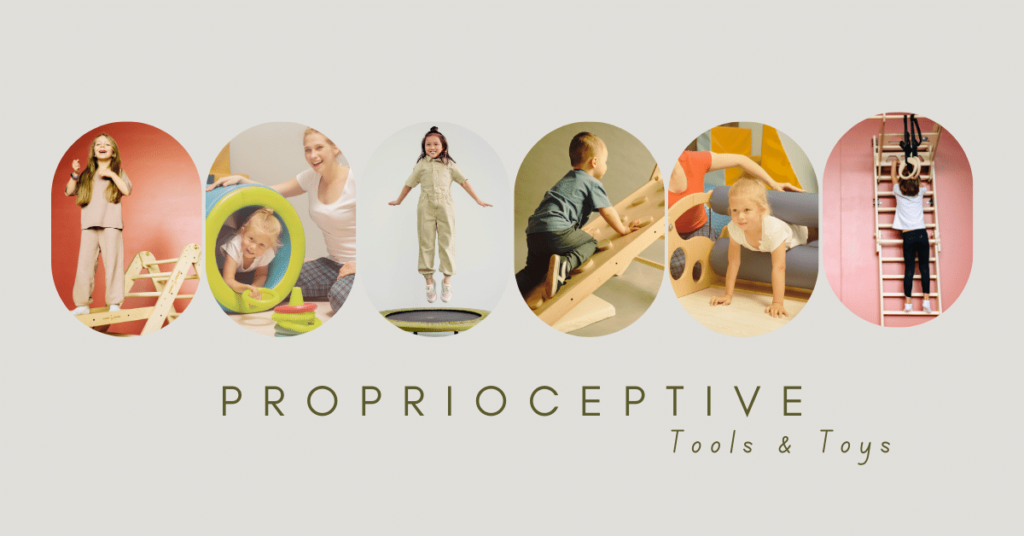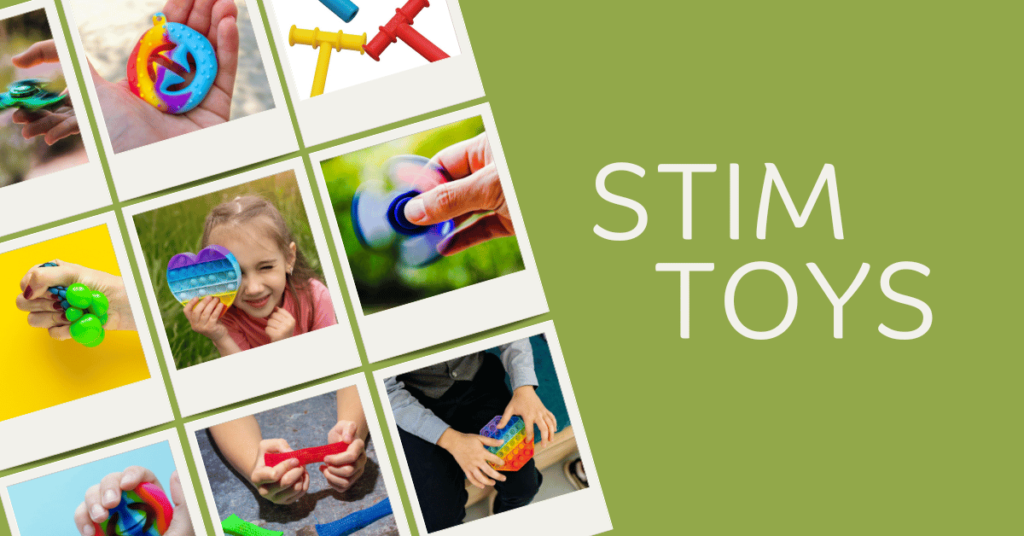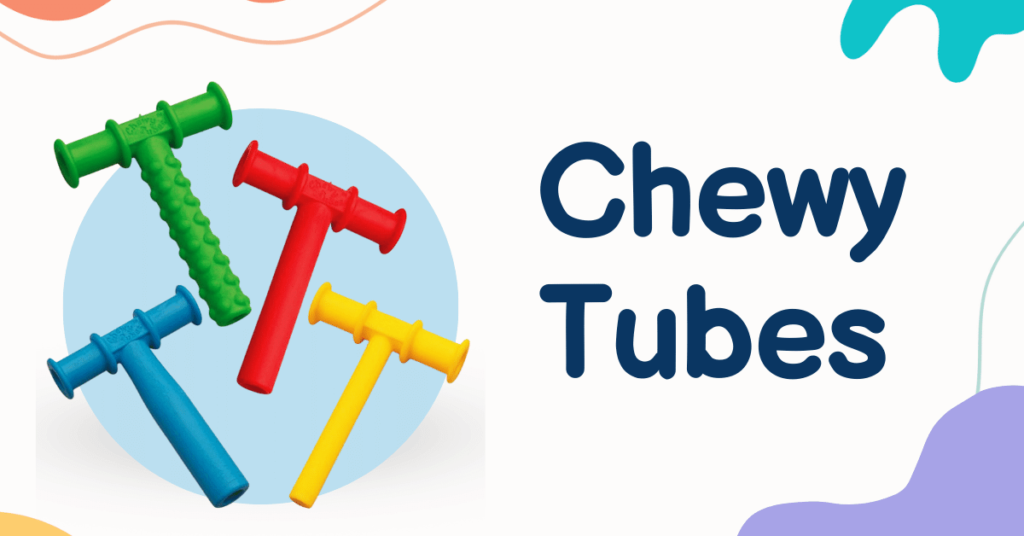Disclosure: This post may contain affiliate links. This means that if you click on a link and make a purchase, we may earn a commission at no additional cost to you. We only promote products we truly believe in, and your support helps us continue providing valuable content to our readers.
I. Introduction:
Proprioception is a sensory system that is often overlooked. Though often disregarded, it plays a crucial role in the development and well-being of individuals. Proprioceptive input activities are beneficial for enhancing emotional regulation and physical coordination.
In this article, we delve into proprioceptive tools and toys. We explore how they are used and their benefits. And provide other practical insights.
II. Understanding Proprioception:
What is the role of the Proprioceptive System in our bodies?
Proprioception is the body’s ability to perceive its position in space. It is a crucial aspect of motor planning and coordination.
Proprioception involves a sophisticated network of sensory receptors. These receptors are predominantly situated in muscles, tendons, and joints. They play a pivotal role in providing continuous feedback to the brain regarding the body’s position and movement.
How Does Proprioception Work for Individuals with Autism?
For individuals with autism, the proprioceptive system may function differently. It influences how they perceive and interact with their surroundings. Some may exhibit heightened sensitivity to proprioceptive input. It makes them acutely aware of their body’s movements. Others, on the other hand, might show hypo-sensitivity. It requires more intense stimuli to register body position. These differences contribute to the wide range of behaviors observed in individuals on the autism spectrum.
III. Typical Signs or Challenges in the Lack of Proprioceptive Activities
1. Sensory Seeking or Avoidance Behaviors
The absence of proprioceptive activities can significantly impact a child’s sensory regulation. It leads to distinct behaviors such as sensory seeking or avoidance.
Consistent input provided by proprioceptive activities is essential. Without it, children with sensory processing differences may seek alternative ways to fulfill their sensory needs. It results in behaviors like constant touching, rocking, or seeking intense sensory experiences. On the flip side, some individuals may develop avoidance behaviors. It includes withdrawing from activities or environments that lack the necessary proprioceptive input.
2. Challenges in Motor Planning and Coordination
A lack of proprioceptive activities can hinder the development of effective motor planning and coordination skills. The proprioceptive system provides the feedback necessary for executing coordinated movements. Without adequate input, individuals may struggle with planning and executing precise actions. It impacts tasks that require fine motor skills or complex coordination. Difficulties in activities such as writing, tying shoelaces, or participating in sports may become more pronounced.
3. Heightened Stress and Anxiety Levels
Notable links have been shown between low proprioceptive input and elevated levels of stress and anxiety. Proprioceptive activities have a regulating effect on the nervous system. It helps modulate arousal levels and promote a sense of calm.
Individuals may get more stressed and anxious without these activities. This is especially true for kids with autism. The absence of the calming and organizing influence of proprioceptive input can contribute to sensory overload. It makes it challenging for individuals to navigate their surroundings. It makes it extra hard to regulate their emotional responses effectively.
4. Impact on Daily Functioning
The repercussions of a lack of proprioceptive activities extend to daily functioning. It affects the individual’s ability to engage in routine tasks.
Simple tasks may become more challenging without the stabilizing effect of proprioceptive input. Simple activities like sitting still and maintaining attention may become more complex, as well as transitioning between activities. It can influence academic performance and social interactions. It affects the overall participation in daily life.
IV. 22 Recommended Products for Proprioceptive Input
These sensory tools and toys are versatile. They can be incorporated into various settings. They are used to provide proprioceptive input tailored to individual preferences and needs.
Whether seeking calming effects, enhancing muscle engagement, or addressing sensory processing challenges, these tools contribute to a well-rounded sensory environment.
1. Weighted Blankets
Weighted blankets are therapeutic bedding. They contain evenly distributed weights, often glass beads or pellets. These weights provide deep touch pressure stimulation, offering a calming effect.
- How to Use. Lay the weighted blanket over the individual’s body during periods of rest or relaxation. It allows the distributed weight to deliver proprioceptive input.
- Usage Tips. Optimal effectiveness is achieved when the blanket weighs around 10% of the person’s body weight. The pressure promotes relaxation, reduces anxiety, and enhances overall sensory regulation.
2. Body Socks
Body socks are stretchy fabric sacks that envelop the entire body. They provide deep pressure and enhance body awareness.
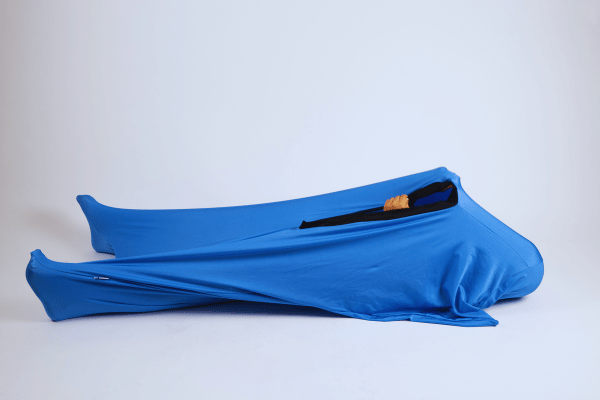
- How to Use. Wear the body sock during imaginative play or as a calming tool. It promotes a sense of security and proprioceptive input.
- Usage Tips. Choose an appropriate size for a snug fit. It is beneficial for individuals with sensory processing challenges who enjoy enveloping sensations.
3. Therapy Ball
A therapy ball is often referred to as an exercise or stability ball. It is a large, inflatable ball used for various exercises and sensory activities.
- How to Use. Sit, bounce, or roll on the therapy ball. It engages core muscles, improves balance, and provides dynamic proprioceptive input.
- Usage Tips. Choose the appropriate size based on the individual’s height. Incorporate activities like bouncing or rolling to enhance sensory regulation.
4. Sensory Swings
Sensory swings are suspended devices that provide a swinging or cocooning experience. It offers both vestibular and proprioceptive input. They come in various designs, including platform swings, cocoon swings, or hammock swings. Learn more about different sensory swings and their benefits in our other blog.
- How to Use. Swing back and forth, spin, or engage in rhythmic movements within the swing. It helps stimulate the vestibular and proprioceptive systems.
- Usage Tips. Ensure proper installation and use in a safe environment. It is ideal for individuals seeking calming or organizing sensory input.
5. Tunnel
Tunnels are collapsible or rigid structures that provide a confined space for crawling or moving through.
- How to Use. Crawl through the tunnel to experience deep touch pressure and spatial awareness, promoting proprioceptive input.
- Usage Tips. Consider tunnels with different textures for tactile stimulation. It is ideal for individuals who enjoy enclosed spaces or seek calming proprioceptive experiences.
6. Balance Beams
Balance Beams are elevated platforms designed to challenge balance and stability.
- How to Use. Walk on the balance beam to engage core muscles, improve balance, and enhance body awareness.
- Usage Tips. Progress from smooth surface beams to those with raised modules. It is particularly beneficial for individuals with coordination difficulties or those seeking sensory challenges.
7. Climbing Toys
Climbing toys encompass a range of equipment designed for children to climb on. It provides opportunities for gross motor skill development and proprioceptive input. Climbing toys are beneficial for enhancing both proprioceptive and vestibular input in a playful setting.
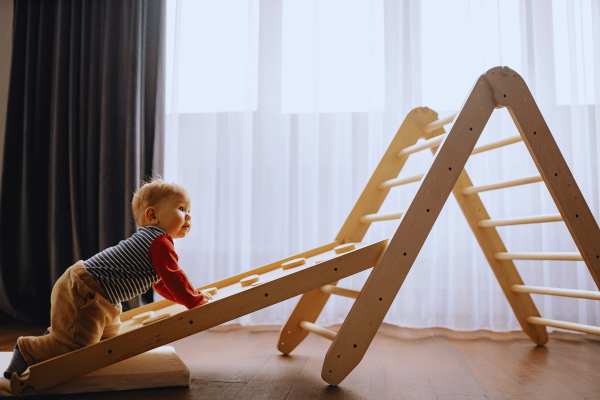
- Types
- Foam Climbers – Soft, foam-based structures that can be stacked or arranged for climbing.
- Climbing Blocks – Sturdy, stackable blocks with textured surfaces for climbing.
- Rock Climbing Holds – Individual holds can be attached to walls or boards to create a climbing surface.
- How to Use. Children climb, crawl, or traverse across these structures. Engaging in activities that promote muscle strength, coordination, and spatial awareness.
- Usage Tips. Choose climbing toys appropriate for the child’s age and developmental level. Ensure climbing structures are placed on a safe surface. Always supervise children during climbing activities.
8. Therapy Putty.
Therapy putty is a pliable material with varying levels of resistance. It is commonly used in hand-strengthening exercises and sensory integration activities.
- How to Use. Engage in hand exercises by squeezing, stretching, or molding the putty. The resistance challenges hand muscles, promoting fine motor skills and grip strength.
- Usage Tips. Gradually progress to higher resistance levels as hand strength improves. It is ideal for those recovering from hand injuries or seeking tactile and proprioceptive input.
9. Weighted Compression Clothing
It comprises garments like vests, shirts, or leggings with built-in weights. They provide deep pressure and proprioceptive input.
- How to Use. Wear weighted compression clothing during daily activities. Or use them as recommended by a therapist to provide continuous deep pressure.
- Usage Tips. Compression clothing with pockets allows for customizable weight distribution. It provides a discreet and wearable solution for sensory needs. Can be beneficial for individuals with sensory processing challenges, autism, or ADHD.
10. Resistance Bands
Resistance bands are elastic bands with varying levels of resistance. They are commonly used for strength training and flexibility exercises.
- How to Use. Integrate resistance bands into exercises to improve muscle strength, joint stability, and proprioception.
- Usage Tips. Select resistance levels based on individual needs. Excellent for enhancing proprioception during physical activities and exercises.
11. Sensory Brushes
Sensory brushes are soft brushes designed for gentle skin stimulation. They are commonly used in sensory integration therapy.
- How to Use. Brush the skin in specific patterns to provide calming proprioceptive input, supporting self-regulation.
- Usage Tips. Use with light pressure, following recommended brushing techniques. Consult with a therapist for personalized guidance, especially in the context of sensory integration therapy.
12. Trampoline
A trampoline is a spring-supported, resilient fabric stretched across a frame, allowing individuals to bounce and perform various movements.
Trampolines offer a fun and effective way to incorporate sensory activities into physical exercise routines. Whether used for recreational bouncing or as part of therapeutic interventions, trampolines provide a dynamic sensory experience that engages various muscle groups and promotes overall physical well-being.
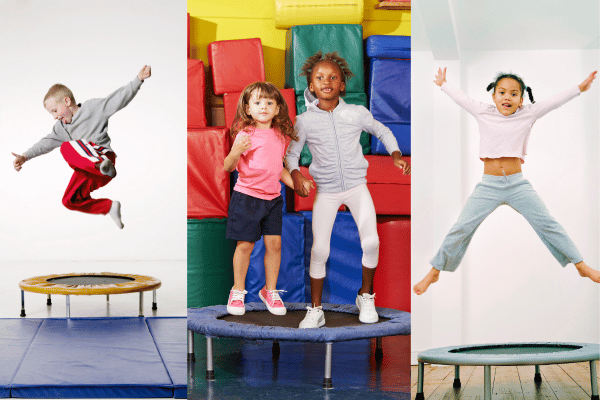
- How to Use. Jump, bounce, or perform exercises on the trampoline, engaging in activities that provide dynamic vestibular and proprioceptive input.
- Usage Tips. Suitable for both indoor and outdoor use. It enhances cardiovascular fitness, coordination, and muscle engagement. Choose an appropriate size based on available space and safety considerations. Ensure proper safety measures, including supervision and enclosure nets.
13. Sensory Compression Sheets
Fitted sheets made from stretchy, compression fabric. It provides gentle pressure across the entire body.
- How to Use. Use these sheets during sleep. It promotes a sense of security and calmness through consistent proprioceptive input.
- Usage Tips. Ensure the sheets fit the mattress securely without causing discomfort.
14. Scooter Board
A low platform with wheels. It allows users to lie on their stomachs and propel themselves forward using their hands.
- How to Use. Promotes upper body strength, spatial awareness, and motor planning.
- Usage Tips. Use in a controlled environment with supervision.
15. Weights
Weights, often in the form of handheld objects or wearables. They provide additional resistance during activities to enhance proprioceptive input. Handheld weights, ankle weights, and weighted vests are standard options.
- How to Use. Hold weights during exercises or wear them on the body. Incorporate them into daily activities for increased resistance.
- Usage Tips. Choose appropriate weights based on individual needs and preferences. ○ Enhances body awareness and muscle engagement during movement.
16. Lap Pad
A lap pad is a weighted pad typically placed on the lap. It provides localized deep pressure to promote a calming effect.
- How to Use. Place the lap pad on the lap during seated activities. Or use them in times of stress to offer gentle, consistent pressure.
- Usage Tips. Suitable for use in various settings, including classrooms or while seated at a desk. Choose a weight that is comfortable and appropriate for the individual. Offers a discreet way to incorporate proprioceptive input.
17. Stepping Stones
Stepping stones are typically flat, textured surfaces arranged on the ground. They provide an interactive pathway for walking or jumping.
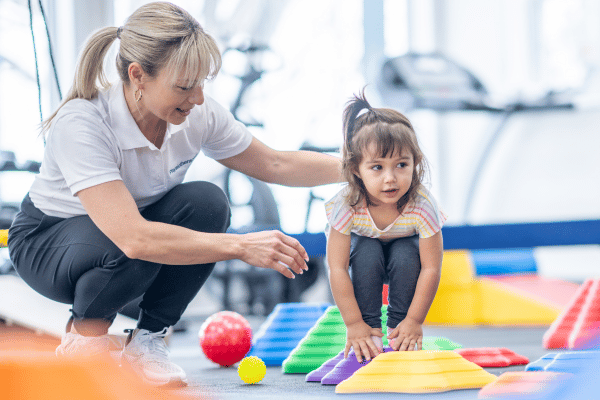
- How to Use. Walk or hop from one stepping stone to another. Engaging in activities that promote balance, coordination, and proprioceptive input.
- Usage Tips. Vary the distance and arrangement for different challenges. Ideal for both indoor and outdoor use. Enhances spatial awareness and lower body strength.
18. Hopper Ball
A hopper ball is also known as a space hopper or bouncy ball. It is an inflatable ball with a handle that allows for bouncing and hopping.
- How to Use. Sit on the ball, grasp the handle, and hop or bounce. It helps engage in activities that provide dynamic vestibular and proprioceptive input.
- Usage Tips. Suitable for indoor or outdoor bouncing activities. Provides an enjoyable way to work on balance and lower body strength. Choose an appropriate size based on the individual’s height.
19. Vibration Pillows
Pillows with built-in vibrating mechanisms to deliver rhythmic vibrations.
- How to Use. Place the pillow on different parts of the body. They provide soothing vibrations and proprioceptive input.
- Usage Tips. Choose a pillow with adjustable vibration intensity levels. Ideal for calming and relaxation.
20. Sensory Paths or Trails
- Description. Designated paths with various sensory elements. It may include balance beams, stepping stones, a tunnel, and tactile stations.
- How to Use. Walk or move along the path to engage in different proprioceptive and tactile experiences.
- Usage Tips: Customize paths based on individual preferences and sensory needs.
21. Wiggle Seat
A wiggle seat is a sensory seating solution. It is designed to promote active sitting and engage core muscles. It often features a textured or uneven surface, contributing to tactile and proprioceptive input during use. Available in various designs, including cushions, pads, or inflatable discs.
- How to Use. Place the wobble cushion on a chair or the floor. Sit on the cushion, adjusting body posture to navigate the unstable surface. Alternatively, use for standing exercises to enhance balance training.
- Usage Tips. Use the wiggle seat during various seated activities. Use them during desk work, mealtime, or quiet time. Encourage the user to pair movements. Bounce or shift using the wiggle seat to enhance proprioceptive input.
22. Razor Scooter
A razor scooter is a two-wheeled, kick-powered scooter with a handlebar for steering and a footboard for riding.
- How to Use. Kick off the ground to propel the scooter forward. Engaging in activities that promote leg strength, coordination, and proprioceptive input.
- Usage Tips. Suitable for outdoor use in paved areas. Supports gross motor skill development and coordination. Ensure proper safety measures, including protective gear.
V. Empowering Lives: The Impact of Proprioceptive Tools on Daily Balance
The profound impact of proprioceptive input on well-being cannot be overstated. Recognizing the challenges associated with a lack of proprioceptive activities, we underscore the importance of incorporating these tools into daily routines, particularly for those with sensory processing differences.
These tools address challenges like sensory-seeking behaviors and motor coordination difficulties and empower individuals to navigate their surroundings with increased self-awareness and emotional regulation. Once considered peripheral, proprioceptive input emerges as a transformative force, unlocking the mind-body connection and contributing to a more enriched and balanced life.
VI. Frequently Asked Questions
Are weighted blankets safe for children?
When used properly and under supervision, weighted blankets are generally safe. It’s crucial to choose an appropriate weight based on the child’s size and consult with healthcare professionals if there are any concerns.
Can proprioceptive activities be overwhelming for some children?
Yes, individual responses vary. It’s important to introduce activities gradually, monitor for signs of discomfort or overload, and tailor the activities to the child’s preferences and comfort levels.
Are there age restrictions for using certain proprioceptive tools?
While many tools are designed for various age groups, it’s essential to consider individual developmental needs. Some activities may need adaptation based on the child’s age and developmental stage.
How do I choose the right compression garment for my child?
Select garments that provide a snug but comfortable fit. Consult with occupational therapists or healthcare professionals for personalized recommendations based on your child’s sensory needs.
Are trampolines safe for proprioceptive activities at home?
Trampolines can offer beneficial proprioceptive input but should be used with caution. Ensure the trampoline is equipped with safety features, supervise usage, and consider professional guidance for appropriate activities.
Can proprioceptive activities replace traditional therapies?
Proprioceptive activities can complement traditional therapies but should not replace them. It’s crucial to maintain a holistic approach, combining proprioceptive activities with other therapeutic interventions as recommended by healthcare professionals.
How do I know if my child is getting enough proprioceptive input?
Monitoring your child’s responses and behaviors can provide clues. If your child exhibits signs of seeking or avoiding sensory input, consult with therapists to adjust the proprioceptive activities accordingly.
Is it necessary to consult with a healthcare professional before introducing proprioceptive activities?
While many proprioceptive activities are generally safe, it’s advisable to consult with healthcare professionals, especially if your child has specific medical conditions or if you have concerns about safety and effectiveness. Professional guidance ensures personalized recommendations for your child’s unique needs.

